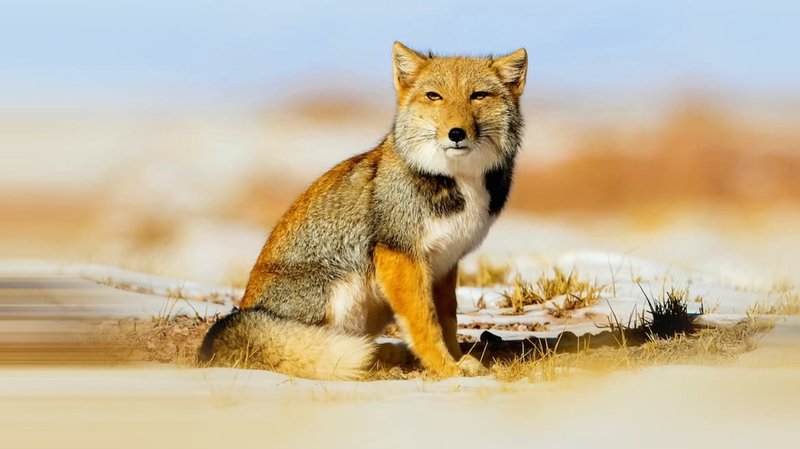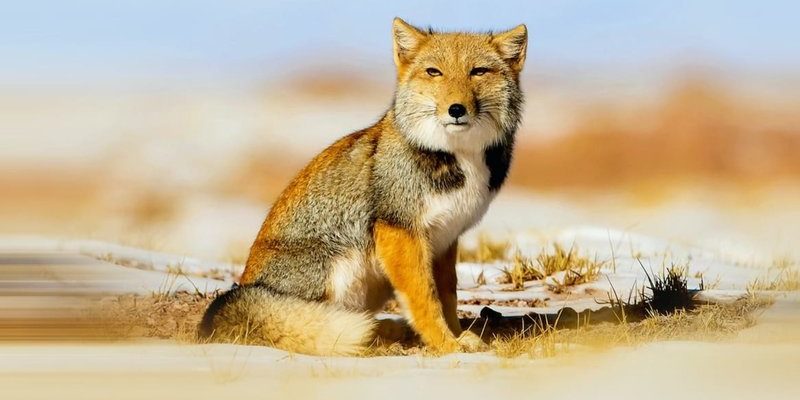
In this conversation, we’ll explore the current status of the Tibetan fox, the challenges it faces, and the steps being taken to ensure its survival. It’s a bit like tuning into a wildlife documentary, filled with fascinating insights, a sprinkle of urgency, and, of course, hope for the future. So, grab a warm cup of coffee, and let’s dive into the world of the Tibetan fox and its conservation status.
What Is the Tibetan Fox?
The Tibetan fox (Vulpes ferrilata) is a medium-sized fox that’s easily recognized by its slender body, short legs, and unique light grayish-brown fur. Imagine a whimsical character from a children’s book. Its large ears give it a curious look, perfect for picking up sounds in the vast, quiet landscapes of its habitat. These foxes are mostly found on the Tibetan Plateau, an area that stretches between China, India, and Nepal, and they thrive in grasslands and scrublands at elevations over 3,000 meters.
These creatures are not just cute; they also play an essential role in the ecosystem. As natural hunters, Tibetan foxes primarily feed on small mammals like pikas and rodents. By controlling the population of these animals, they help maintain a balanced food web in their environment. Without them, you might find these small mammals overrunning the landscape, leading to more significant ecological issues.
One of the most interesting aspects of the Tibetan fox is its social behavior. Unlike many fox species that prefer solitude, Tibetan foxes are often seen in pairs or small groups. It’s almost like they’re hosting a cozy gathering in the wild—keeping each other company while hunting and playing. This behavior not only boosts their survival rates but also highlights the unique adaptations they have made in their harsh habitat.
Current Endangered Status of the Tibetan Fox
So, where does the Tibetan fox stand on the conservation list? Here’s the thing: as of now, the Tibetan fox is classified as “Least Concern” by the International Union for Conservation of Nature (IUCN). This means that, currently, it doesn’t face immediate threats of extinction on a global scale. However, that doesn’t mean it’s in the clear.
The IUCN’s assessment doesn’t fully capture potential future threats. For example, the increased human activities, such as mining and agriculture, disrupt their natural habitats. As these foxes lose their homes, their populations could decline more significantly than we realize. You might be wondering, what’s the harm in a little development? Well, when habitats shrink, so do the food sources for these foxes, making it hard for them to survive.
Moreover, climate change poses another looming threat. The Tibetan Plateau is experiencing rapid climate changes, which can affect the availability of prey and suitable living conditions for the Tibetan fox. While they may not be endangered today, the future looks uncertain if prompt measures aren’t taken to address these issues.
Major Threats to the Tibetan Fox
As we’ve just discussed, the Tibetan fox navigates various challenges in its environment. Let’s dig a bit deeper into some of these threats:
- Habitat Loss: Expanding agricultural fields, infrastructure projects, and urbanization are shrinking their habitat. Think of it as a puzzle where pieces are being taken away—eventually, what’s left isn’t enough to support them.
- Climate Change: Changes in temperature and rainfall patterns can disrupt their food sources. With rising temperatures, the habitats they thrived in could simply become unsuitable.
- Human-Wildlife Conflict: As humans encroach more on their territory, conflicts may arise, especially when farms are targeted for hunting. This can lead to negative perceptions and actions against the foxes.
- Decline in Prey: If rodent populations dwindle due to habitat loss or climate changes, Tibetan foxes may struggle to find enough food to sustain themselves.
Each of these factors intertwines and compounds the others, creating a complex web of challenges the Tibetan fox faces. It’s a reminder of how fragile ecosystems can be, and how delicate balances can tip into crisis.
Conservation Efforts for the Tibetan Fox
Despite these challenges, there is hope for the Tibetan fox. Numerous conservation efforts are underway aimed at preserving this magnificent creature and its habitat. Here’s a closer look at some of these initiatives:
- Protected Areas: Governments and organizations are establishing protected areas to safeguard the natural habitats of the Tibetan fox. By creating these sanctuaries, they help ensure that the foxes have safe spaces to roam and thrive.
- Research Programs: Scientists are conducting studies to better understand the Tibetan fox’s ecology, behavior, and population dynamics. Knowledge is power, and the more we learn, the better we can protect them.
- Community Engagement: Involving local communities in conservation initiatives is vital. Educating residents about the ecological importance of the Tibetan fox helps reduce human-wildlife conflict. It’s like teaching a neighbor to appreciate a curious visitor rather than seeing it as a nuisance.
These efforts also come with the hope of raising awareness about wildlife conservation overall. When more people know about the Tibetan fox and its struggles, they can contribute to its preservation in meaningful ways.
What Can You Do to Help?
You might be thinking, “What can I do to help the Tibetan fox?” While it may seem like a big challenge, every small action counts. Here are a few steps you can take:
- Support Conservation Organizations: Consider donating to or volunteering with organizations working on wildlife conservation. Your contributions can help fund research and protection initiatives.
- Spread Awareness: Share what you’ve learned about the Tibetan fox with friends and family. The more people know, the more they might care.
- Reduce Your Carbon Footprint: Climate change affects wildlife, including the Tibetan fox. You can help by being mindful of your energy use, reducing waste, and supporting eco-friendly products and practices.
Each action you take can ripple outwards, contributing to a larger movement dedicated to preserving wildlife and their habitats.
The Tibetan fox is a remarkable creature that holds a special place in the ecological tapestry of its high-altitude home. While it currently enjoys a status of “Least Concern,” the future is anything but guaranteed. With threats ranging from habitat loss to climate change, these foxes face numerous challenges that could jeopardize their existence.
But there’s hope. Ongoing conservation efforts, community engagement, and increased awareness can help protect this unique species. Every small step counts, and together, we can ensure that the Tibetan fox continues to roam the vast plateaus of Tibet and beyond, inspiring future generations. After all, conservation is not just about saving one species; it’s about preserving the intricate web of life we all share. So, let’s do our part to keep this beautiful story going.

